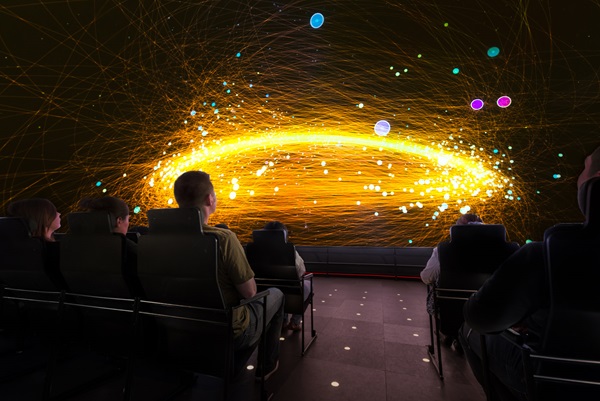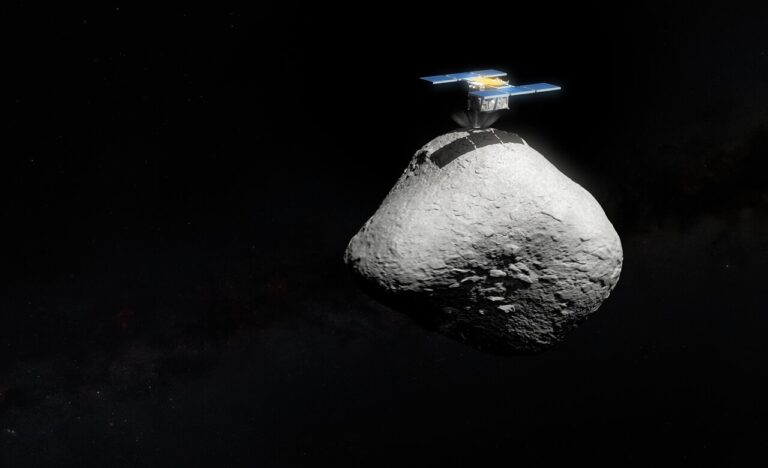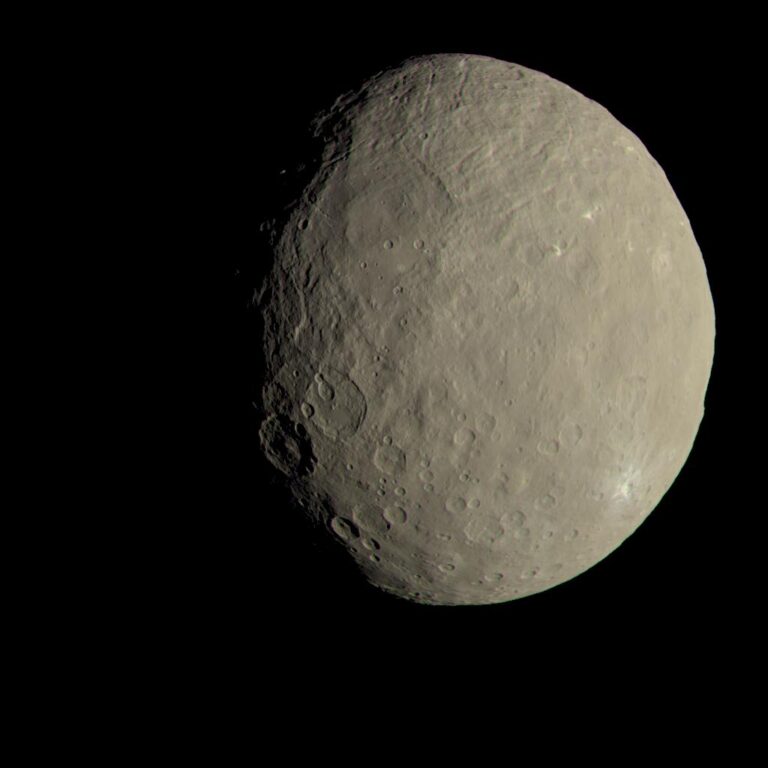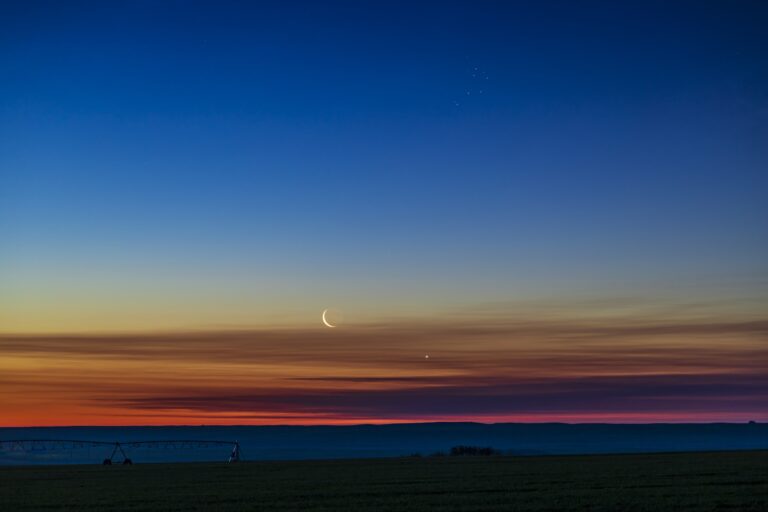Key Takeaways:
Mike Brown, the Caltech astronomer who has unearthed countless Kuiper Belt objects, is now making the case for another gas giant, this one just a little smaller than Neptune but a lot farther out. In a new show for the Adler Planetarium in Chicago, Brown and the staff lay out the meticulous case for what’s been called, to the chagrin of Pluto fans, Planet Nine.
“The show is a great show, because it starts with Pluto, and goes into the whole story of the exploration of the outer solar system, including all the other dwarf planets we’ve found,” Brown said. “Only at the end, after we’ve put that all together, do we show how these dwarf planets show that there’s a Planet Nine out there.”
The Adler Planetarium crew worked closely with Brown on the show, including filming on the first night when he and collaborator Konstantin Batygin officially began their hunt at the Subaru Telescope on Mauna Kea.
Brown thinks confirmation of Planet Nine will come within three to five years, if not sooner. But as many are quick to point out, no one has yet seen this outer world. So why do we think there’s something lurking out there?
The Adler show is not necessarily about Planet Nine itself. It’s about this very question of why we think something’s out there. It’s the story of the Kuiper Belt, the loose collection of planetesimals that criss-cross in and out of Neptune’s orbital boundary. Pluto is the most famous of these objects, and the largest known. Eris is just a hair smaller. The show also introduces Makemake, Haumea, and Sedna.
It’s that last object that starts to point to something strange in the outer solar system. Sedna has an eccentric orbit, one that takes it far into the outer reaches of the solar system, possibly into the inner Oort Cloud. And it’s not alone.
There are seven other objects that orbit in roughly the same way. Not only that, but Sedna and the seven other dwarfs all seem to meet at roughly the same place in their orbits before swinging far out. There’s just a fraction of a percent chance that this is a coincidence.
The more likely scenario is that something put them there. There have been a few scenarios to explain Sedna’s orbit, or that of its cousin 2012 VP113. But with six other objects having these nearly identical characteristics, astronomers came to realize it had to be something big. And according to Brown’s hypothesis, that thing is Planet Nine.
“This is really the first time when we realized something had to be a planet,” Brown said. “There’s nothing else that explains it.”
Of course, Brown has hunted for a ninth planet since it would’ve been called Planet Ten. Brown is known as the “Pluto-killer” for his work finding Eris, Makemake, and the other dwarf planets that made astronomers realize there were hundreds of large Kuiper Belt Objects in the outer solar system, and that Pluto just one in a crowd.
But Brown says that when he began his search in 1999, he expected maybe to find something the size of Mars at 70 astronomical units (1 astronomical unit, or AU, is the average distance from Earth to the Sun), not something larger than Earth but smaller than Neptune at 200 AU at its closest, and 1,000 AU at its furthest point away.
Patrick McPike, a visualization engineer at the Adler, worked on the show with Brown. Not only did they have to create a presentation for a planet that we haven’t seen, but McPike and his team had to create a visually compelling presentation for small planets like Sedna, Quaoar, and more that have been observed, but only as points of light.
“I would say, visually, while the science is sound that we’ve discovered these objects, Sedna and Makemake, we don’t know what they look like, so there’s this balance between art and science,” McPike says. “We know the reflectivity, we kind of know what the colors are, but it’s kind of a challenge since no one knows what they’re going to look like without taking it into the science fiction realm.”
Thankfully, the show was being put together shortly after NASA’s Pluto flyby, when the New Horizons probe returned the first ever images of the once planet and still fascinating icy world. So they had a little help, McPike says, with that mission allowing the astronomical community to “take and redefine how we think about these objects.”
McPike says that, aside from making sure to get the science just right with the help of Adler’s on-staff astronomers, one of the biggest challenges was figuring out presentation, balancing the action of a planetarium show with the need to lay out a strong hypothesis, all while keeping the audience engaged.
“The biggest challenge for this show was keeping things moving. Motion on the dome that tells the story,” he says. “We have a lot of spheres, so how do you make the spheres interesting?”
I was able to catch a press screening. The Adler staff pulled it off wonderfully, giving insight into the outer solar system in a clear, conversational way that will make even Pluto purists admit that, at least, there is a slightly misnamed “tenth” planet out there. (Or eleventh, if they’re being charitable to slightly smaller Eris but ignoring the other KBOs.)
Two telescopes may be able to find it in the near future. Brown and others will continue to use the Subaru Telescope in Hawaii, while the Dark Energy Survey in the Southern Hemisphere should provide such a complete data set that Planet Nine will be picked up without a targeted search. It may not be as hard to see as we think.
“Planet Nine, best guess, is that it’s around 1,000 AU,” Brown says. “The motion is so slow that you can’t see it over a night, but you could see it over two nights.”
When will those two nights be? No one knows yet. But it may be a matter of any day now. And in the meantime, the Adler’s show will eventually be touring other planetariums. Who knows? It may need an update sooner rather than later if they find what they’re looking for.
The Planet Nine show is currently running at the Adler Planetarium in Chicago.










